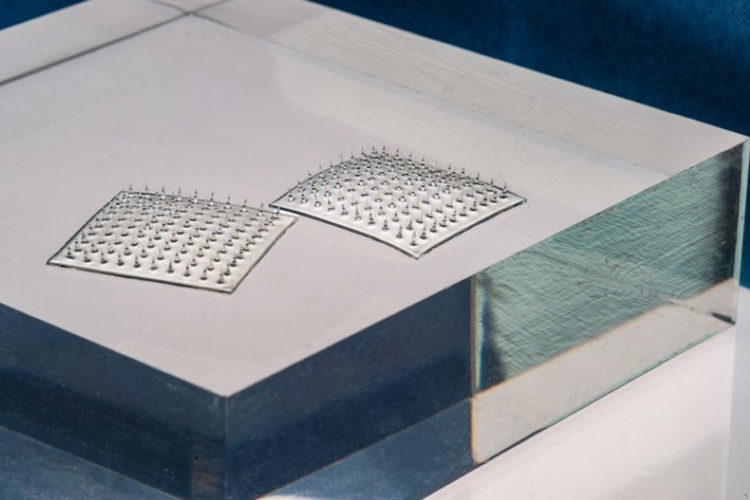
According to MIT, the sensor's microneedles are moulded from a solution of proteins found in silk cocoons and use a capillary action to draw fluid into the back of the sensor, which is printed with two types of specialised ink. One of these bioinks changes colour when in contact with fluid of a certain pH range, indicating that the food has spoiled; the other turns colour when it senses contaminating bacteria such as E. coli.
PEGS sensors aim to cut food waste
The researchers attached the sensor to a fillet of raw fish injected with a solution contaminated with E. coli. In under a day they found that the part of the sensor that was printed with bacteria-sensing bioink turned from blue to red, indicating the fish was contaminated. After a few more hours, the pH-sensitive bioink also changed colour, signalling that the fish had also spoiled.
The results, published in Advanced Functional Materials, are said to be a first step toward developing a new colorimetric sensor that can detect signs of food spoilage and contamination.
Smart food sensors could help mitigate against outbreaks of food contamination, and they may also prevent consumers from throwing out food that may be past a printed expiration date but is still consumable.
"There is a lot of food that's wasted due to lack of proper labelling, and we're throwing food away without even knowing if it's spoiled or not," said Benedetto Marelli, the Paul M. Cook Career Development Assistant Professor in MIT's Department of Civil and Environmental Engineering. "People also waste a lot of food after outbreaks, because they're not sure if the food is actually contaminated or not. A technology like this would give confidence to the end user to not waste food."




Poll: Should the UK’s railways be renationalised?
Correlation does not equal causation! That's a hugely simplified view of things and ignores things like increasing car ownership, increasing commuting...